January 1st, 2010 · 1 Comment
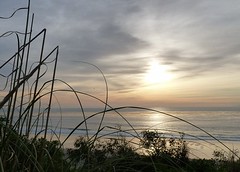
Happy New Year!
. . . Whatever that means.
It might mean another holy every day opportunity to be here now and celebrate together the preciousness of what is happening. “Happy” and “happen” are from Middle English hap, meaning “happen,” as well as “good luck.” So “happiness” means “happen-ness” and “lucky.” It’s the fortunate state of being present with what is happening.
This season, we could great each other warmly and say, “Happen New Year!”
Blessings on all that is happening. Blessings on all that has happened, making it possible for us to be happening now. Blessings on all that will and might some day possibly happen. Blessings on our vision as we look forward into life.
At the end of the Nia New Year’s Eve event, Vision 2010, I asked my mother to choose the focus from a basket of over 375 cards which had just been created as foci for the new year.
Every Nia practice begins with a focus. The practice of the Nia focus is to consciously embody and sustain where we put our attention and intent.
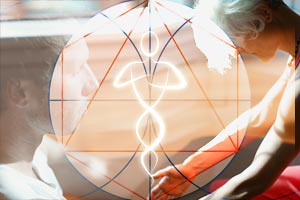
All thirty-plus people in the room had just participated in an hour of Nia, followed by a body-based inquiry process.
They had asked their bodies questions like, “Body, what do you love?” “Body, what brings you the sensation of stability?” “Body, what brings you the sensation of peace?” “Body, for your spiritual transformation, what do you desire?”
Each person then wrote the essence of their body’s answers onto the backs of cards hand-stamped with the Nia swoosh.

My mother chose at random from the basket the focus for Nia Southern Oregon for 2010: Be In Nature, Feel Nature.
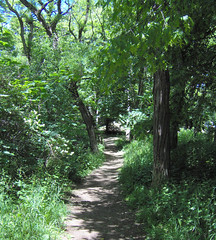
Be in nature. Feel nature.
What could be better than the loving reminder not only to uproot myself from the computer and daily busyness to touch, smell, see and hear the natural world, but to also touch smell, see and hear my very own nature, and the natural world all around me every moment that has been conscripted into houses, desks, refrigerators, pots and pans, running water, clothing, vitamins, pens, cell phones, cars, asphalt, glass.
So this morning, my husband, Richard, took me on a walk in the park. It was rainy and the world smelled moist and fresh. The sound of Ashland Creek cleared my head and my heart.
Be in nature. Be nature.
Happy New Year.
Tags: Dancing Through Life · Etymology · Nia Class Focus · Ongoing Nia Classes · The Foundation of Nia
December 31st, 2009 · 3 Comments
This is one of my favorite poems to say, to hear, to feel the echo of spiraling through the past and the future and the present. We heard it at the end of the Nia New Year’s class this morning.
I Live My Life
I live my life in growing orbits,
which move out over the things of the world.
Perhaps I can never acheive the last,
but that will be my attempt.
I am circling around God, around the ancient tower,
and I have been circling for a thousand years.
And I still don’t know if I am a falcon,
Or a storm, or a great song.
— Rainer Maria Rilke / 1899
from Book for the Hours of Prayer
translated by Robert Bly
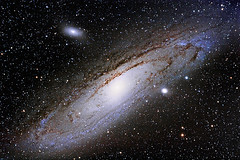
Here’s the poem I read on New Year’s Day 2009, inspired by the beautiful song created by Garry Schyman for the video, Where The Hell Is Matt?
Stream of Life
The same stream of life that runs through my veins night and day
runs through the world and dances in rhythmic measures.
It is the same life that shoots in joy through the dust of the earth
in numberless blades of grass
and breaks into tumultuous waves of leaves and flowers.
It is the same life that is rocked in the ocean-cradle of birth
and of death, in ebb and in flow.
I feel my limbs are made glorious by the touch of this world of life.
And my pride is from the life-throb of ages dancing in my blood this moment.
— Rabindranath Tagore / 1913
from Gitaljali
translated by Rabindranath Tagore
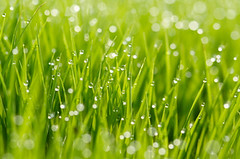
On this day, that we call the last day of the year, I bow to the Holy that makes life live by spiraling and sprouting up through each one of us, grasses, muscles, milk, stars, air and deep water fish, day in and day out, year in and year out, breath in and breath out, ending again and beginning again and always in motion, dancing the worlds into being and spiraling and sprouting from and to a time beyond our own.
Happy New Year, my dearest friends.
Tags: Ongoing Nia Classes · Poem of the Week
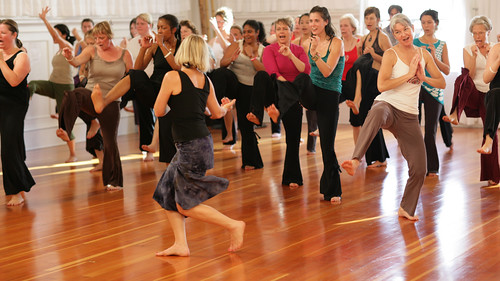
Today we chose the focus from the basket of 2009 focus cards for almost the last time this year.
The focus of our Nia practice today was “moving forward.”
As we move forward toward 2010, we find ourselves in the seven day period between what we call Christmas and what we call the New Year. This is a liminal time, a threshold between one time and the next. Some say the veils between the worlds are thin now, and anything can happen. These are also the seven days of Kwanzaa.
Today’s practice was the routine “Sanctuary,” choreographed by Nia co-founder Debbie Rosas to the beautiful music of Adiemus, “Songs of Sanctuary.”
As we move forward into the new year, as we move forward into the moment, we can take our own sanctuary with us. How do we do this?
Every Nia class begins with the practice of “Stepping In.” The purpose of stepping in is to leave behind distractions. It’s a technique that Debbie and Carlos borrowed from martial arts. When the martial artist steps out onto the floor to fight, she leaves behind all distractions.
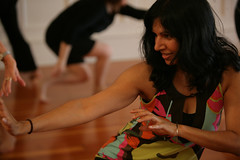
In Nia when we step in, we are stepping in to the present. We step in with all four realms — body, mind, emotions and spirit. We step into sensory awareness of the body. We step into an open mind. We step into emotional presence. And we step into spiritual readiness — that is, we step into our connection with everything.
Presence is our sanctuary. When I’m present I take sanctuary in myself, and I take my sanctuary with me as I cross the threshold into now, as I move forward and step into the moment.
In sanctuary, I can move straight forward or I can move forward in apparent retrograde motion. I can move forward mentally, physically, emotionally and energetically. I can move forward in the wild and natural spiral motion of all migrating animals, of plants, galaxies, waters and winds.

It’s a paradox that to be present, I step in. It’s a paradox that to move forward, I need to be present. As story teller Gioia Timpanelli says, when we find ourselves in the place of paradox, we are in the presence of truth.
When I’m not present, I’m not really moving forward at all. I’m actually fleeing the moment, trying to jump over it and into the future. This creates the sensation of going fast — we see it all around us in our culture — but it’s only the illusion of moving forward. It’s what astrologer Caroline Casey would call the “toxic mimic” of moving forward.
I find myself is this situation often. This is why Nia is my practice.
Nia invites us to connect with sensation, and sensation is someting we can only experience in the present moment.
By stepping into the presence sensation again and again, I create for myself a sanctuary, an energetic state of being that is both a shelter to rest in and a vessel in which I am carried and moved forward each moment into the present.
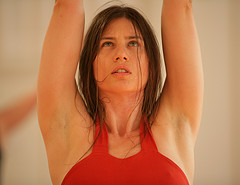
Nia invites us to move forward again and again into the sanctuary of the moment, to move forward again and again into the sanctuary of the joy of movement, and to move forward again and again into the sanctuary of the body’s way.
Come, return again to the sanctuary of your holy, whole self — here, now — and from this very moment, this very body, move forward and step into the precious life awaiting you.
* * *
Come dance with us this New Year’s Eve morning and through body-based inquiry set your intent for moving forward and stepping into the new year and help create the class foci cards for 2010. Thursday, December 31, 9:30-11:00 am, $12, at The DanceSpace in Ashland, Oregon.
Tags: Dancing Through Life · Ongoing Nia Classes · The Foundation of Nia

I’m not ready for Hanukah
I imagine the Jews of the second century BCE weren’t ready either. Just like now, it was the darkest time of the year — the new moon closest to winter solstice. It was the darkest time spiritually, too, for the eternal flame in the temple was about to go out.
What does that mean to believe the eternal flame is about to go out?
It means that there are times when the precious temple of the body, the holy temple of the psyche, the beating temple of the heart, the winged temple of the spirit are sputtering, afraid, under-nourished, trapped in scarcity — and that the body, mind, heart and spirit are, like those old time Jews and like all our ancestors at some point, fighting a civil war among themselves, lost in that which we call darkness, searching for home.
But the light came in, whatever that means, and it came in during the darkest times, and the light kept expanding. And so the temple, whatever that is, was rededicated.
This Hanukah, as I light the candles, first one, then two, and so on, I illuminate the intent to receive during this dark time the expanding light within the holy temple of my being and within the holy temple of the whole world, and to rededicate myself to life and to the mystery — whether or not I am ready.
Tags: Dancing Through Life
December 3rd, 2009 · 2 Comments
Suppleness was the focus of class today.
“Supple” is from the Latin sub + plicare, meaning “to fold under.” It’s related to “pliable,” as in the ballet movement, plié, which in French literally means “folded”or “bending” to describe how the knees bend.
The word “suppleness” even sounds supple. The sound of lippy “p”s rolling into the tongue-y “l” and ending with a soft “ess.”

Suppleness is a desirable quality in the body.
The structure of the entire body, every cell, every organ, every muscle, every bone, is held together by a tough but elastic fiber called connective tissue — think gristle in a steak or strands of gluten in bread dough. Connective tissue (also called fascia) is comprised mostly of water, which we call the fluid matrix. It’s the same fluid as as our cerebrospinal fluid and as the interstitial fluid that bathes all our 75 trillion cells.
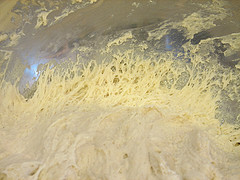
The fluid matrix gives connective tissue its fluidity, and collagen protein fibers give it its shape, allowing structures in the body to have form yet be free to move. Everything in the body is moving,
Connective tissue gets stiff after an injury, or after surgery when the body makes scar tissue. This is how the body protects itself. The fluid matrix becomes viscous, like water becomes ice or like jello sets. We get body work when we need help loosening up the tight places.
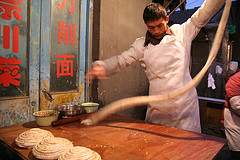
We want our connective tissue to be supple, with just the right balance of form and fluidity, with just the right balance of yang and yin, or, as we say in Nia, tight but loose.
Suppleness is a desirable quality in the mind.
A fluid mind helps me see things from different points of view, release attachments, ideas and stories that no longer serve and learn new things. Flexibility of thought and intent help the brain and nervous system stay strong, smart and youthful. As Nia co-founder Debbie Rosas says, “The nervous system loves variety.”
The more variety there is in the pathways the brain uses, the more adaptable and resilient the brain becomes. We now know the brain is much more adaptable than previously thought. Parts of the brain are able to take over function for other parts that are injured. The brain can even grow new neurons. This new understanding is called neuroplasticity. “Plastic” comes form the Greek plassein, “to mold or to form.”
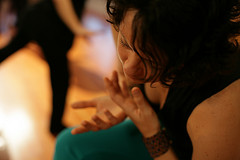
Suppleness is a desirable quality in the heart.
Just as the physical heart and the blood it pumps are in constant motion, so my emotional body benefits from suppleness, allowing emotions to move in freely and be experienced, and then to move out freely when the experience is complete. When I resist an emotion or hang onto a feeling, I become rigid and have lost my heart’s suppleness.
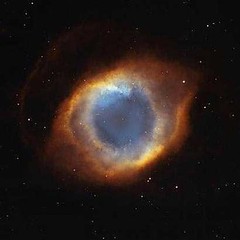
Suppleness is a desirable quality in in the spirit.
Suppleness of spirit offers me a world to live in where my uniqueness can come through, whatever that might mean at any given moment. Suppleness of spirit offers me a world to live in where my local self easily bathes in the waters of the greater Self, and the greater Self easily pours in to the form of my local self. Local self inhales and exhales greater Self. Greater Self inhales and exhales local self.
Suppleness is a kind of compassion.
Tags: Etymology · Nia Class Focus · Ongoing Nia Classes
November 14th, 2009 · 2 Comments
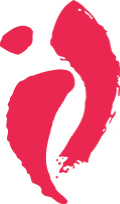
I bow to Nia.
I bow to Nia as a path of body consciousness. There are many paths of body consciousnes — thank God! — and the one I’ve been practicing for the last 14 years is Nia.
One way I understand why I got sick and went back into asthma, which I hadn’t had in years but had had very severely at one time, is so the consciousness that has been growing in my body could return to the same place on the spiral but on a deeper level. So that whatever the healing is for me in this lifetime — healing my lungs, breath, spirit, my body, my heart and my self-expression — it can now happen more, more deeply, more fully more completely.
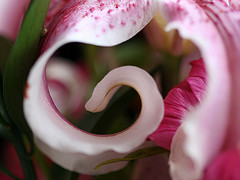
I’ve had thoughts of, “Oh, shit, it’s all falling apart.” Yes. And it’s also falling away. Things fall away and reveal new layers of consciousness and healing available right inside my body.
When I was sick in the past, I brought the level of consciousness to the experience I had then, which was wholly and beautifully what it was — but it was before Nia.
And it was while I was sick then that I found Nia. Or Nia found me.
So 14 years ago a little seed of healing was planted in the middle of being ill, in the soil of unmetabolized and unexpressed grief, in the soil of longing, in the soil of hope, in the soil of fear, in the soil of constriction, in the soil of the body expressing itself through illness.
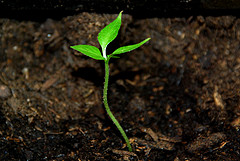
Nia held me, taught me and healed me then, Nia and is holding me, teaching me and healing me now. This healing is available to us all: The ability to ever more deeply, with ever more intimacy, love, respect, gradualness, awe and joy be with the complex, mysterious, myriad sensory life of life in a body. The ability to “let the soft animal of your body love what it loves.”

This is the Nia promise: Through movement we find health.
Through movement we sense, feel, experience, discover, express, create. Through movement we live.
The body itself is in constant motion: heart beating, 75 trillion cells respirating, organs secreting, nervous system humming. Life itself is motion.
Thank you especially to Debbie Rosas for all the years dedicated to articulating with love and clarity the voices of the body: the voice of the thigh bone, the collar bone, the pelvis, the nervous system, the hand, the foot.
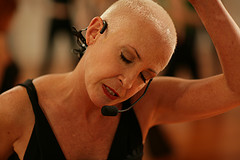
The body itself is continually articulating and expressing itself: heart beating, 75 trillion cells respirating, organs secreting, nervous system humming. Another word for the joints in the body is articulation.
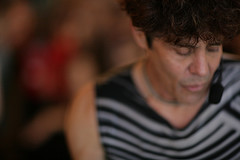
Until now, I truly had not realized how steadily and the depth to which the articulation of the voices of the body has been seeping into my cells and changing me, preparing me to be able to move through this extraordinary time with grace. So that out of the well-tended compost pile of my fear and loneliness has sprouted more and more consciousness in my body.
Thank you Debbie and Carlos for creating the deep, complex and compassionate path of Nia.

The focus of class today, chosen from the basket of foci for 2009, was “to remember my divine self.”
Nia’s practice of the joy of movement is a path. It is a path to remembering our divine self. It is a path to healing and love.
The joy of movement is a physical sensation that sits right next to any emotion. The joy of movement is a sensation that sits right next to any physical state, whether pleasure, pain or bliss. The joy of movement is a sensation that sits right next to any thought. The joy of movement is an energy we can circulate in the body to heal and grow.
This is what Nia offers: Through movement we find health.
Thank you Nia.
Tags: Dancing Through Life · Essays on Self-Healing · Ongoing Nia Classes · Through Movement We Find Health
November 10th, 2009 · 3 Comments
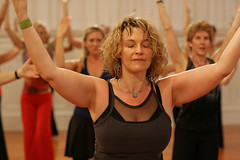
I’m back!
After being away in New Mexico studying with Martín Prechtel and then unexpectedly plunging into a healing journey, today I taught my Nia class for the first time in over a month!
I am embryonic. Everything is new. Everything is new, strange and beautiful. I am in a never-before-seen or experienced world.
We lit candles. We did the Five Stages of Self-Healing — embryonic, creeping, crawling, standing and walking — based on the developmental movements we all did as children. We spoke to our bodies, saying, “Body, please guide me . . .” We danced.
I created a new routine called “Aliveness,” based on the song I Am Alive by David Zeller, zt’l, which has been such a constant and loyal companion, and other music that has been accompanying me on this healing journey.
Come move with us this Thursday at The DanceSpace as we re-enter Aliveness again, new, again, together, again.
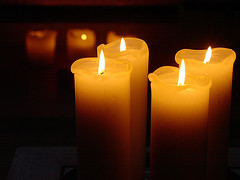
Tags: Essays on Self-Healing · Lungs · Ongoing Nia Classes
How I approach everything is how I approach my body.
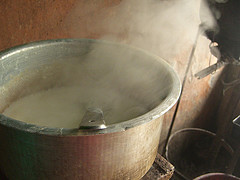
On Saturday I made yogurt. I use fantastic raw milk I get from a dairy farmer and freeze for storage in gallon jugs. I love this milk and it’s been therapeutic for my body during this healing time.
The milk had not completely thawed, so as I heated it in my make-shift double boiler, I stabbed the big frozen chunk floating in a sea of milk with a kitchen knife.
I watched myself. I watched myself, an insane murderer of milk, using more than enough force, as though the music from “Psycho” taken over me. I watched myself as some frightened thing inside chased the soft animal of my body into the narrow place of coercion.
I watched myself be ungrounded and not allow the river of the moment to simply roll out before me in the present.
I saw I was far from my ancestors who offered milk both to the sky and to their knives.
I watched myself. Tears welled up, but they did not come out. I watched myself be more attached to entitlement than tenderness or sorrow.
I’m not an idealist. I know it’s the nature of all life, as death’s twin, that with each step, each breath, each motion, something is destroyed, whether twig, fish or wind, each dying at its appointed time to feed the next thing.
But among all of the community of life, it’s only we humans, holy amnesiacs that we are — and this is why the Tzutzujil Maya call us that — who do our best to erase the memory of the grief debt all beings owe the holy ground for giving us life. We want what we want now and without the physical and spiritual responsibility for where it comes from. I am no different.
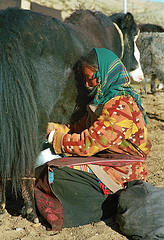
Our ancestors sang to the milk as they churned it into butter. They sang to the milk as a holy being, to bless the beauty, nobility and grief of the milk’s sacrifice to die and change form from milk to cream to butter to human body.
Our ancestors sang to the metal as they smelted and forged it into knives. They sang in recognition that minerals are living beings, old time deities like copper — Venus, tin — Jupiter, iron — Mars. They sang to bless the beauty, nobility and grief of the metal’s sacrifice of offering up its essential nature to die and change form for our sake.
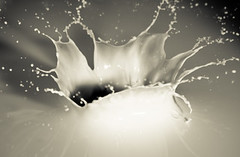
We mammals are born of milk, have bodies of milk, whether it’s mother’s milk, cow’s milk, goat’s milk or the milk of the ground. The Milky Way is a splash of milk from the Big Dipper in the hand of the holy as an offering to the whole night sky. Our ancestors tossed their milk offerings aloft from ladles as they made their kumis or kefir or yogurt or ghee or simply received life from the great udder herself.
The word “galaxy” comes from the Greek, galacto, galaxia, “milk.”
Later, I was making tea, and I saw the violence again. I felt the spoon pierce the water in the pot as I stirred the tea and I flinched. Oh, we say, it’s just a spoon and some tea.
But I didn’t ask permission to pierce. How I approach everything is how I approach my body. If I act like matter is a slave, then that is how I treat my own body.
Then I thought, what if I simply say, “Thank you”?
What if I say thank you to the spoon, the tea, the milk, the knife. Not just thank you for feeding me, although that, too. But what if I am actually saying thank you as way to actually speak to the spoon, to the metal, to the milk.
What if I could be noble and courteous, courageous and humble enough to speak directly to the living matter I enslave. What if I could actually bow before the great holy diaspora of matter dug out of the ground that serves me willingly every day, but that every day I fail to see.
What if I said “Please” and “Thank you” to my body, made of earth and milk, as I ride her through the world.
So I tried it. I took the spoon out of the tea and before I stirred it again, I said, “Thank you.” What happened?
My body immediately relaxed, exhaled and landed on the ground.
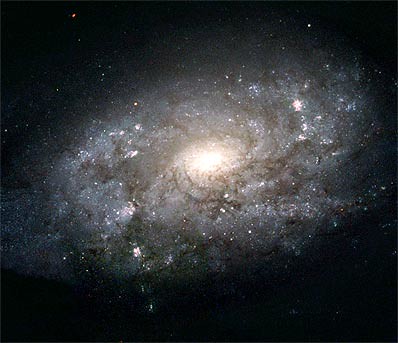
(Tenth in a series about healing pneumonia and asthma.)
Tags: Dancing Through Life · Essays on Self-Healing · Etymology · Lungs · Ongoing Nia Classes
November 7th, 2009 · 2 Comments
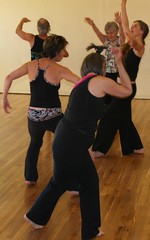
Thank you to my Nia community from the whole of my being.
Thank you to the Nia teachers who have been holding the space for the practice. Thank you to the Nia students who have been creating the space for the practice of Nia at The DanceSpace in Ashland, Oregon — during the last four extraordinary weeks in particular, and over the last ten years as well.
You are, individually and collectively, an astonishing continually blooming flower of grace, diligence, beauty, dignity and the joy of movement.
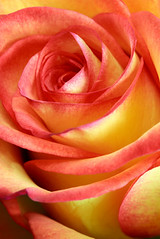
Thank you for receiving the practice of Nia into your lives, for bringing her so fully into your bodies, hearts, minds and spirits so that she can sprout up, flower in new, never-before-seen ways, reseed herself and continue to grow more joy in the ecosystems of the body and the world.
It has been truly a privilege to be a student this week and be so well held in the space of Nia.
And it was positively thrilling to break a sweat in class this morning! It was the first sweat in weeks that wasn’t from detoxing or a nice, big pot of hot tea.
Thank you, Nia community.
I love you.
(Number nine in a series about healing pneumonia and asthma.)
Tags: Dancing Through Life · Essays on Self-Healing · Lungs · Ongoing Nia Classes
November 5th, 2009 · 5 Comments
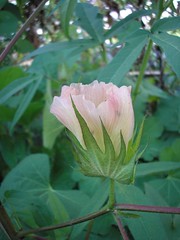
What if we heard the voices of each thing singing, “I am alive”?
As I begin to engage in the world a little more each day, I feel the vexing return of the hurried, fight or flight culture in my body. I notice this because I notice I’m holding my breath.
I’m holding my breath, not in the sense of not breathing, but in the sense that I’m confining my breath’s natural expression in the moment. I notice this is happening automatically as I turn my attention to “getting things done.”
As I reach to turn off the water, I use a little too much force, and I notice in that action I feel a meanness and desire to dominate the faucet so I can get what I want right now.
As I reach for my towel, I feel the inner fascist rushing forward, eager to conscript.
What if, as I dry off from my shower, I heard the voice of the being of the cotton plant itself singing in the towel?
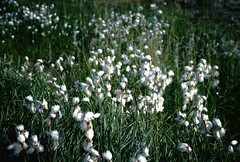
What if I could hear, inherent in its cottony nature, the cotton itself singing its cottony story, singing of living rooted in the ground, maybe in a toxic factory farm, maybe in an organic farm, but either way, in the ground with its companion cotton plants, lined up straight like soldiers, descendents of the wild, economically uncooperative nomadic cottons of Mohenjo Daro, Guila Nacquitz and Agnes Scythicus, on the front line to clothe humans in their crazed, grief-stricken flight, singing with the rest of its plant-self, its leaves and twigs and flowers — white or pink or yellow with red sunbursts, singing about the cycles of hot, humid, southern sun and rain, of dark nights of respiratory glycolysis and bright days of photosynthesis, singing of the winds and the buzzing, crawling and flying insects, like big-eyed bugs, pirate bugs, green ladies, ground beetles, red fire ants, boll weevils, aphids and spiders, and of birds.
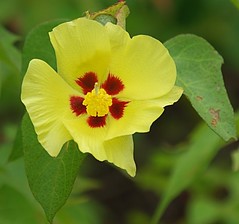

What if I could hear the cotton singing about being plucked off the stem, perhaps by a human hand, but more likely by sharp metal tongs of a mechanical cotton picker, itself conscripted out of the ground from its minerally life and banged into servitude, being shunted through the picker head, mechanical spindles and doffer then vacuum sucked out the picker door, singing about being separated from its own seeds in the cotton gin, being classed, carded, combed, about being dyed in who knows what, about being spun, woven or knitted, cut and sewed at unnatural break neck speeds in incessantly loud, clacking, unventilated factories, folded tight, packaged, shipped in airless boxes inside trucks roaring along highways to stores and eventually bought and hung in my bathroom, used and washed and generally ignored unless I find it useful to dry myself.
What if I could hear this whole story of beauty and heartbreak?
Maybe, just maybe, I might go a little slower.

Certainly I would be overwhelmed by the staggering grief and beauty of the intricate, cacaphophonous orchestra of all the world’s beings. We are in relationship with everything.
The indigenous mind can hear these songs, and weeps, loves and feeds them.
The reason indigenous cultures are small is precisely to avoid the devastation that the sound of the unheard songs of matter induces in those of us who live in the civilized world and have little means to metabolize without fleeing into soul-numbing addiction and depression just to cope.
How I treat everything is how I treat my body.
If we act and think like matter is dead, imagine how we are treating our own bodies. Imagine.
“You only have to let the soft animal of your body
love what it loves.”
— Mary Oliver
But what if I heard the voices of my body.
What if I could hear the voices of my body singing, “I am alive!” What if I could hear the voices of my body singing,”Yes,” or “No,” or “Maybe,” or “Lie-lie-lie-lie-lie-lie-lie-lie-lie.”
What if I could hear my heart singing her rhythmically swooshing love song as she ushers her blood children through my arteries and capillaries to my tissues.
Maybe, I might go a little slower. Maybe I might love a little more.
What if I could hear the silvery, electrochemical siren songs of my nervous system as she swims, shimmering like a giant, winged, angel mother seahorse in the ocean of my cerebrospinal fluid, guiding with her songs every single one of the 75 trillion cells of my body.
Maybe I might go a little slower, and approach with some gradualness my relationship with my body and with all things, all of us strangers in a strange land. I might long, just a little, to let the great elephant ears inside my chest twitch and unfold to hear the songs of all life. I might weep. I might love a little more.
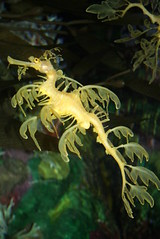
This morning, as I was doing the “Body, I love you” practice, it came to me, seeping up to consciousness from within my lungs themselves, that most of my life, I have been afraid of my lungs.
Somehow I have not wanted to fully have lungs. I’ve preferred to hold my lungs as separate, fleeing from them even as they are right there, nested in my chest.
The pleura are the weepers. Pleura, from French pleurer and Latin plorare, “to cry, lament, implore.” Pleura, from Greek “side, rib.”
“You do not have to be good.
You do not have to walk on your knees
for a hundred miles through the desert, repenting.
You only have to let the soft animal of your body
love what it loves.”
— Mary Oliver
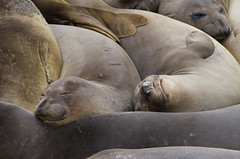
Let me not be an unwitting, grief-stricken soldier driving the body like a work-horse to be whipped by the terrified inner conquering mentality on the front lines against the natural, the natural body, the natural soul, who, like a rabbit or a river or a cedar just wants to breathe and move in the the great pulsing constant motion of the community of life and die at its appointed hour to feed more life, but let me be a sparkling soarer, a fearless galloper, a splashing swimmer, a whiskery nestler, a milk-drinking laugher, pleura of hope, a snorting flyer, a squawker, a sniffing pacer or a glistening jumper in remembrance of the holy in matter.
How do I engage in the wider world and remember?
Through movement. Through sensory awareness.
By asking “What does the body itself love?” This is everything.
This is the life of matter.
(Number eight in a series about healing pneumonia and asthma.)
Tags: Dancing Through Life · Essays on Self-Healing · Etymology · Lungs · Ongoing Nia Classes





































